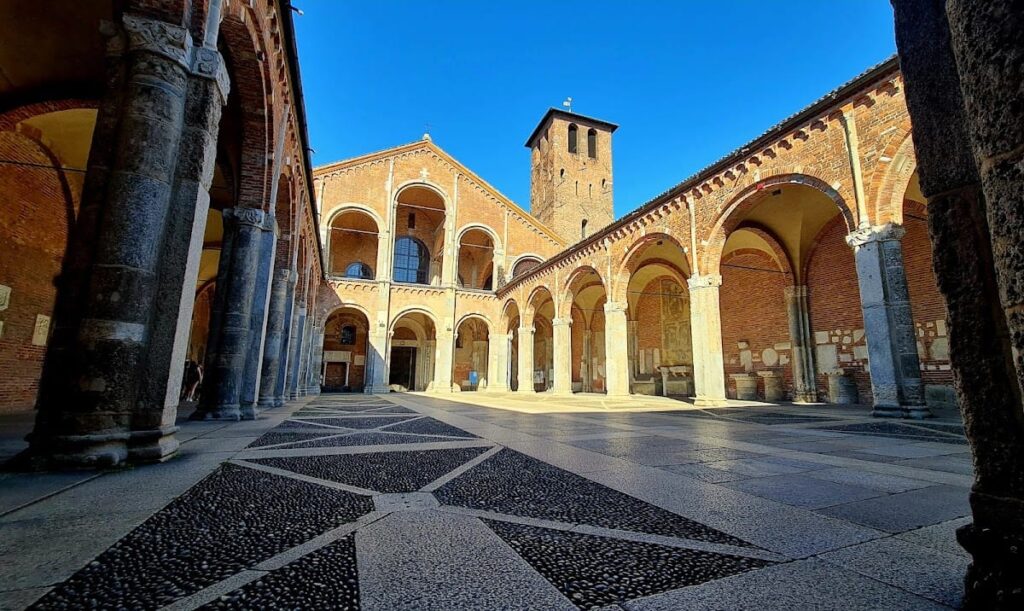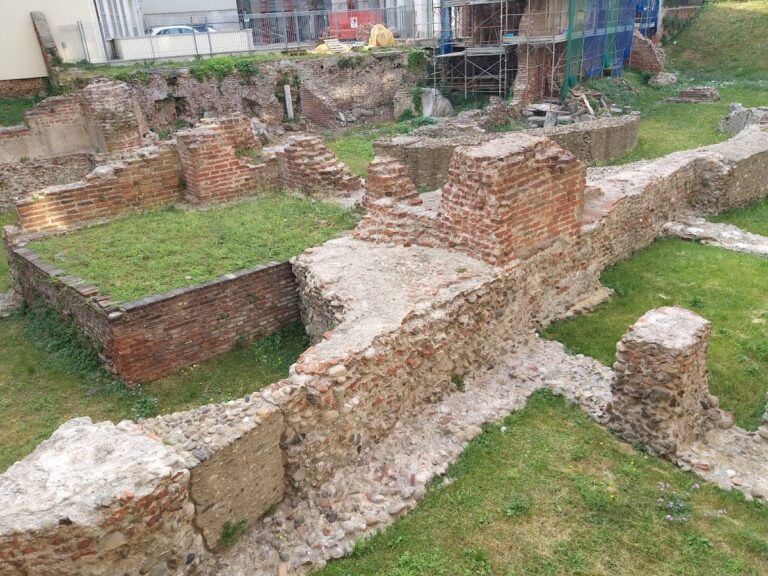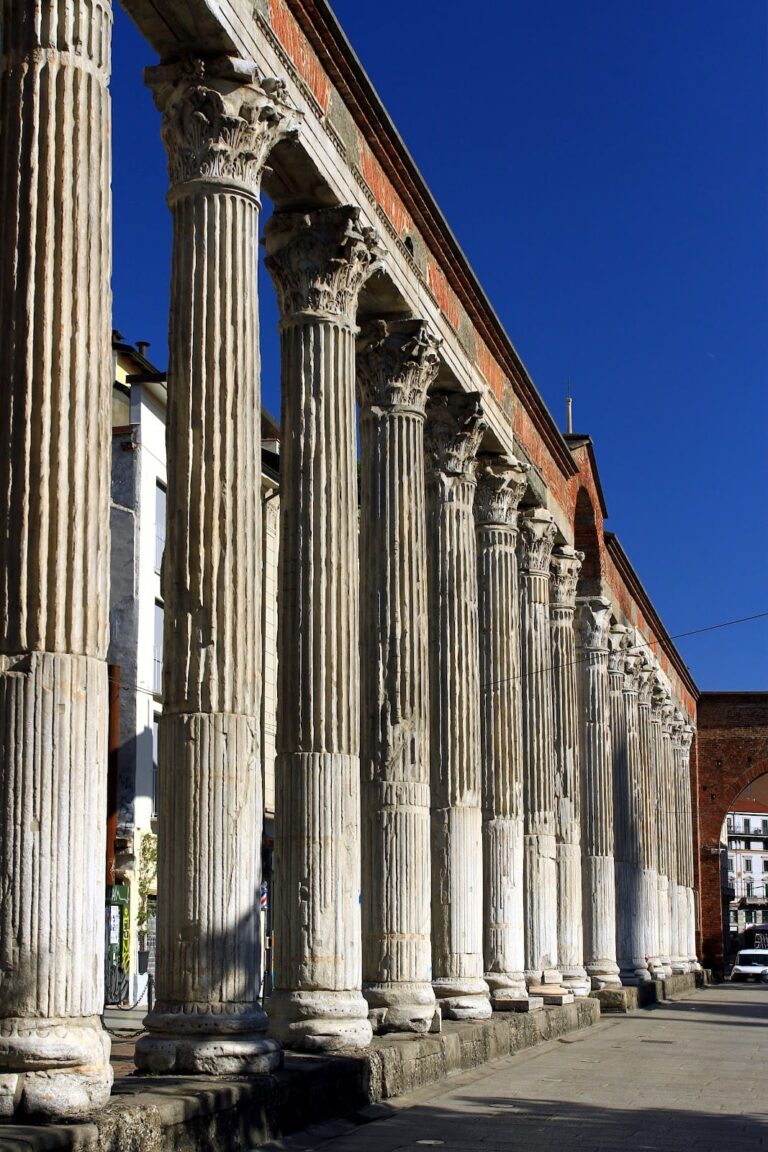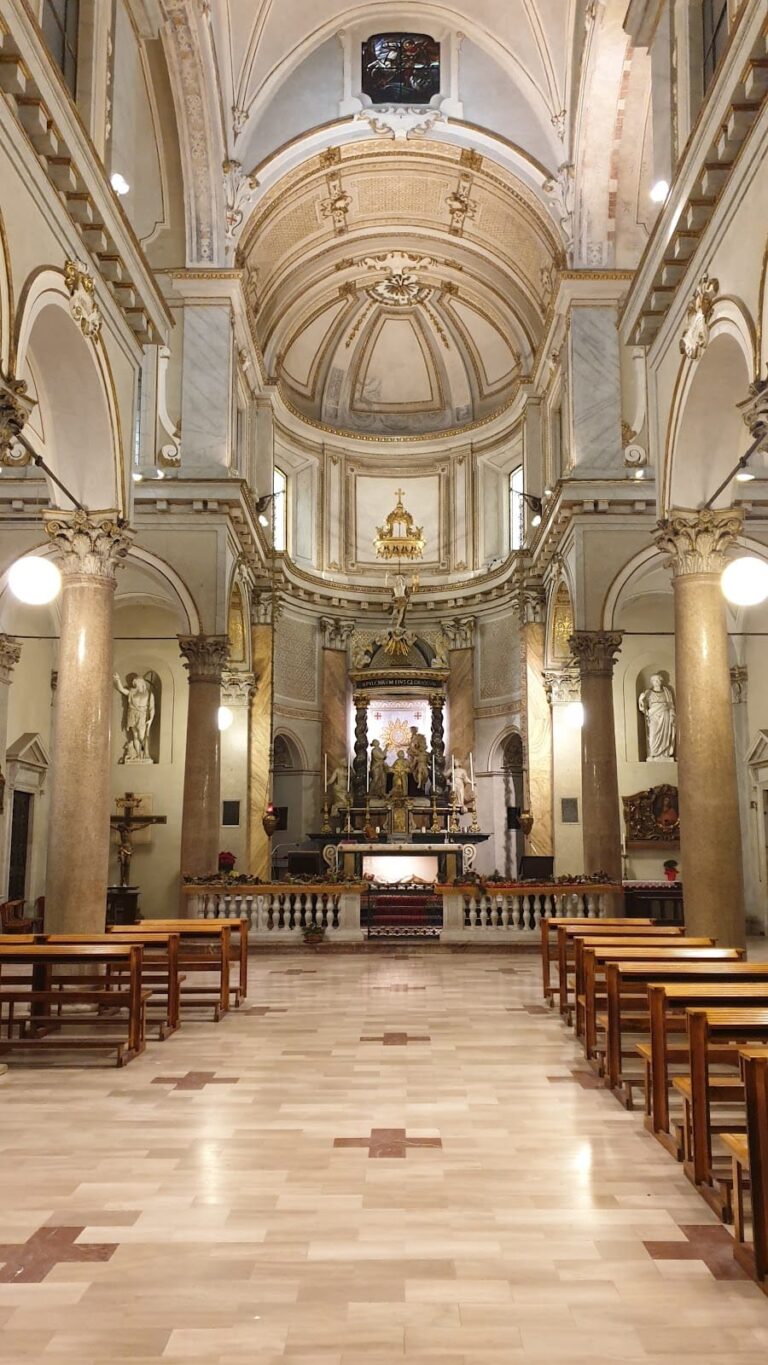Basilica of Sant’Ambrogio: A Historic Church in Milan, Italy
Visitor Information
Google Rating: 4.7
Popularity: High
Google Maps: View on Google Maps
Official Website: www.basilicasantambrogio.it
Country: Italy
Civilization: Medieval European, Roman
Remains: Religious
History
The Basilica of Sant’Ambrogio stands in Milan, Lombardy, northern Italy. It was built by the Western Roman Empire when Milan, then called Mediolanum, served as the empire’s capital. Construction began between 379 and 386 AD under Bishop Ambrose, who chose a site outside the Roman city walls near Porta Vercellina. This area was a cemetery for Christian martyrs persecuted under Roman rule, which led to the basilica’s original name, Basilica martyrum, meaning Basilica of the Martyrs.
Bishop Ambrose placed the relics of Saints Gervasius and Protasius in the basilica and was buried there in 397 AD. Over the following centuries, the basilica was renamed in his honor between the 9th and 11th centuries. Ambrose also initiated the building of four basilicas in Milan, each dedicated to different saintly groups, collectively known as the Ambrosian basilicas.
In the 5th century, Bishop Laurence I made the first modifications by raising the presbytery floor with marble slabs and adding two funerary chapels. One of these chapels, San Vittore in Ciel d’Oro, still survives today. Later, in 784, Archbishop Peter I founded a Benedictine abbey next to the basilica, which was approved by Charlemagne in 789. This abbey included a canonica, or church house, to serve the lay community.
During the 9th century, Bishop Angilbert II expanded the basilica by adding a large apse with a vaulted room for liturgical use. The apse vault was decorated with a mosaic showing Christ enthroned among martyrs and archangels, a decoration that remains visible. The right bell tower, known as Campanile dei Monaci, was built in this period, inspired by the Basilica of Saint Peter in Rome. The Ottonian ciborium, a canopy over the altar, was added between the late 9th and early 10th centuries, resting on four red porphyry columns from the original basilica.
Between 824 and 859, Archbishop Angilbert II commissioned the altar of Saint Ambrose, a masterpiece of Carolingian goldsmith work. This altar originally housed the relics of Saints Ambrose, Gervasius, and Protasius beneath the ciborium. From 1088 to 1099, Bishop Anselm III of Rho led a major reconstruction in the Romanesque style. The basilica’s original three-aisled plan with apses and a quadriporticus was preserved, though the quadriporticus lost its original function for catechumens and became a meeting place.
The central nave’s wooden roof was replaced with a vaulted ceiling during this rebuilding, while the side aisles’ vaults predate this period. Between 1128 and 1144, the taller left bell tower, Campanile dei Canonici, was constructed. The tiburio, or lantern tower, was added at the end of the 12th century but collapsed in 1196. It was quickly rebuilt with an octagonal shape featuring two tiers of blind arcades.
The basilica played a political role in 1258 when it hosted the Peace of Saint Ambrose, ending internal conflicts in the Milanese Commune. It also became the traditional site for the coronation of Holy Roman Emperors as Kings of Italy, a practice believed to have begun in 961 with Otto I’s coronation by Archbishop Valpert. The “Devil’s Column,” a Roman column outside the basilica, was part of the coronation ritual where emperors swore oaths and embraced the column.
The Benedictine monks managed the basilica until 1497. In 1492, they commissioned Donato Bramante to design a new canonica, reconstruct parts of the monastery, rearrange chapels, and create cloisters. After the Benedictines, Cistercian monks from the Milanese abbey of Chiaravalle took over, promoting cultural activities such as opening the monastic library to the public.
In 1799, during the Cisalpine Republic, the basilica was suppressed as a religious chapter and converted into a military hospital. It reopened for worship after the Napoleonic era under Austrian restoration. The basilica suffered heavy damage from Allied bombings in 1943, especially to the external quadriporticus, dome, and apse mosaic. Restoration led by Ferdinando Reggiori took place in the 1950s.
Archaeological excavations beginning in 2005 uncovered about ninety graves dating to the 4th and 5th centuries near the basilica. These graves, lacking grave goods, are linked to the martyr cemetery outside the Roman walls where the basilica was originally built.
Remains
The Basilica of Sant’Ambrogio follows a rectangular layout with three aisles ending in apses and a quadriporticus at the front. This design strictly preserves the original 4th-century paleochristian plan. The building materials are locally sourced and considered modest, mainly bricks of various colors, stone, and white plaster.
The interior is longitudinal, with a central nave about twice as wide as each side aisle. The nave has four bays; the last bay is topped by an octagonal dome called a tiburio, while the other bays have ribbed groin vaults. The side aisles support galleries known as matronea, with bays half the width of the nave’s. Light enters through windows in the façade and the dome.
The façade is broad and flat, featuring two superimposed loggias with arches and decorative blind arcatures. The central portal is flanked by columns with archivolts decorated with motifs influenced by Sasanian art. The quadriporticus, originally for catechumens, became a civic and religious meeting place. From the upper loggia, the bishop blessed citizens and officials addressed the crowd.
The monastery complex includes the basilica, the canonica with its Romanesque bell tower, and the church of San Sigismondo. The monastery cloisters, designed by Donato Bramante in 1497, now house the Milan seat of the Catholic University of the Sacred Heart. The right bell tower, Campanile dei Monaci, dates to the 9th century and is the only surviving part of the original monastery. The taller left bell tower, Campanile dei Canonici, was completed in 1128 and features blind arcatures and pilaster strips, with a late 19th-century upper loggia added.
Artistic highlights include the main entrance portal’s reliefs symbolizing the struggle between Good and Evil, decorated with classical, heraldic, and zoomorphic motifs. The altar of Saint Ambrose, a Carolingian goldsmith masterpiece from the 9th century, has a golden relief antependium inset with precious stones on all sides. The Ottonian ciborium rests on four red porphyry columns from the original basilica and features stucco reliefs depicting Christ commissioning apostles and saints.
The 11th-century apse mosaic, partially restored after World War II, shows Christ Pantocrator between Saints Gervasius and Protasius in military attire, with scenes from Saint Ambrose’s life and tondi of other saints. The early Christian chapel of San Vittore in Ciel d’Oro, dating to the 5th century, has a trapezoidal plan and a crypt. Its vault is covered with gold leaf mosaics centered on Saint Victor Maurus, surrounded by ruby decoration and seasonal fruits. The side walls display mosaics of six saints, including the oldest known image of Saint Ambrose.
Inside the basilica is the sarcophagus of Stilicho from the 4th century, decorated with scenes from Jesus’s life and allegories of faith. Marble inlays from the early Christian choir and a marble balustrade with Christian Alpha and Omega symbols are preserved in the basilica’s treasury antiquarium. The crypt beneath the main altar houses the relics of Saints Ambrose, Gervasius, and Protasius.
The basilica also contains the tomb of Emperor Ludwig II, who died in Lombardy in 875. The original entrance door ornamentation is preserved in the Milan Diocesan Museum. Outside, the “Devil’s Column,” a Roman imperial column from the 3rd century, is linked to a legend of Saint Ambrose’s battle with the devil and was used in the coronation of German emperors.
A notable bronze sculpture called the “Serpent of Moses,” donated by Byzantine Emperor Basil II in 1007, rests on an ancient Roman granite column inside the basilica. It survived iconoclastic destruction and is venerated for protection against illnesses. Legend holds that the end of the world will be signaled by the serpent’s descent from the column.
From 1886 to 2006, the basilica was the site of the traditional Milanese Christmas fair “Oh Bej! Oh Bej!,” held annually from December 7, Saint Ambrose’s feast day, to the following Sunday.









